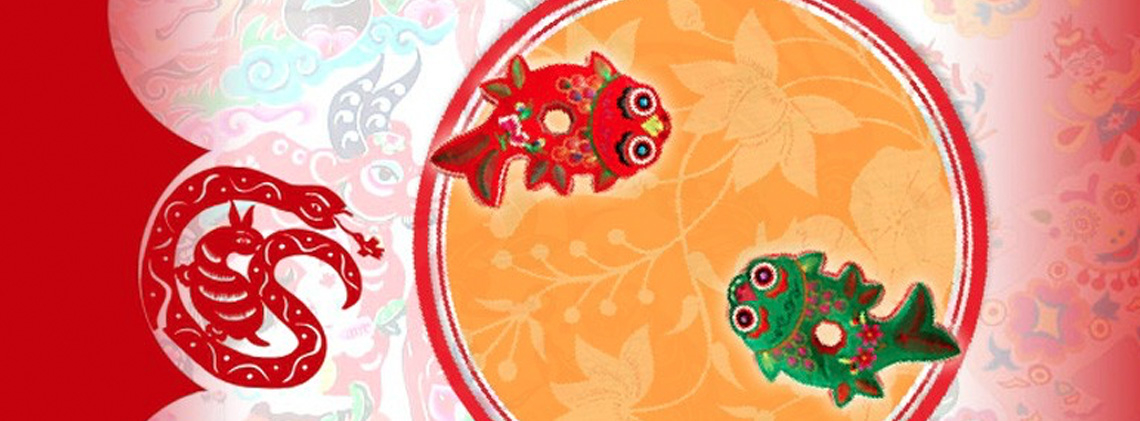
Chinese Folk Arts
Splendid
Chi Culture
Topic
Chinese Folk Arts
The folk arts described in this section refer to objects of material culture made for common or folk use, including painting, weaving, cutting, carving, dyeing, and other popular handicraft forms. Unlike high-end art produced for imperial, religious, and literati use, folk art is both artistic and practical. Created by peasants and artisans, the folk art of China reflects the aesthetic tastes and heartfelt aspirations of the common people.
The subject matter of Chinese folk art primarily focuses on the daily life of the common people throughout the year. Some folk objects are traditionally produced only seasonally, such as the clay rabbit figurine during the Mid-Autumn Festival or the evil-repelling sachet worn by children during the Dragon Boat Festival. Other folk items like the kite are made and used year-round as Chinese since ancient times have believed that releasing a high-flying kite could magically drive diseases away. Many regional handicrafts reflect wishes for fertility and many offspring, such as the paintings and pottery images of Guanyin, the Buddhist deity capable of granting children; the painted nini gou (clay puppy) figurines of Henan, the wawa dage (baby big brother) clay figurines of Tianjin, and the zhuaji wawa (baby with a pair of hair buns) paper cut-outs of northwest China, among numerous other examples.
Folk art is a combination of aesthetics and functional utility. It not only provides people with beautiful items to use for the enhancement of everyday life but also gives them an outlet to express their respect, love, and good wishes towards their family, friends, and community. The Li people of Hainan have retained traditional methods of making bone objects with distinct regional folk characteristics. Like artifacts made of wood and stone, those of bone played a significant role in prehistoric culture. Bone hairpins and combs made by the Li people are among the finest ever produced. Bone objects prevailed in all aspects of daily life. Bone was made into tools for digging, weeding, and dusting; into utensils for scooping food; into sickles for reaping crops; into scrapers for threshing grain; into weft cutters for textile manufacturing; into shuttles for weaving fishnets; into darts for spearing fish; into hairpins and combs; into necklaces for personal adornment; into talismans for protection against evil; and so on.
Apart from farming and weaving, the making of handicrafts was the most common way of earning a living in traditional society. Males were generally required to learn at least one craft while females were expected to master nügong (women’s work), including weaving, sewing, embroidery, and carving. The Miao, an ethnic group in southeast Guizhou, assign particular importance to needlework. In the heavily Miao populated Qingshui river basin, every girl used to start embroidering her wedding dress by age thirteen or fourteen. These gorgeous ensembles, complex and colorful in embroidery, worn with a full set of silver ornaments—headdresses, necklaces, bracelets, and earrings—would weigh up to fifteen kilograms. The splendid attire and accessories flaunt both the wealth and the needlework skills of the wearer. This costume indisputably attests to the high value and self-confidence of the Miao women.
Marriage is the major life event that is most intimately connected with the production of folk arts and crafts. Before marriage, handkerchiefs, insoles, pouches, shoe uppers, and other folk textiles are prepared and embroidered by girls with great care as tokens of love for their fiancés. In the countryside, matchmakers would often present a girl’s embroideries to the prospective bridegroom before introducing her. This custom is echoed in a popular folk song of northern Shaanxi: “In July when the tips of cowpeas turn bright, I make a pair of shoes for you, my love; Wearing the nice shoes you have come, to see your darling damsel.”
Many Chinese folk arts appear on UNESCO’s global Intangible Cultural Heritage List, including the two millennia old shadow puppetry and paper-cutting of many parts of China, the Zhang family clay figurines of Tianjin, and the tie-dyed cloths of Yunnan.




